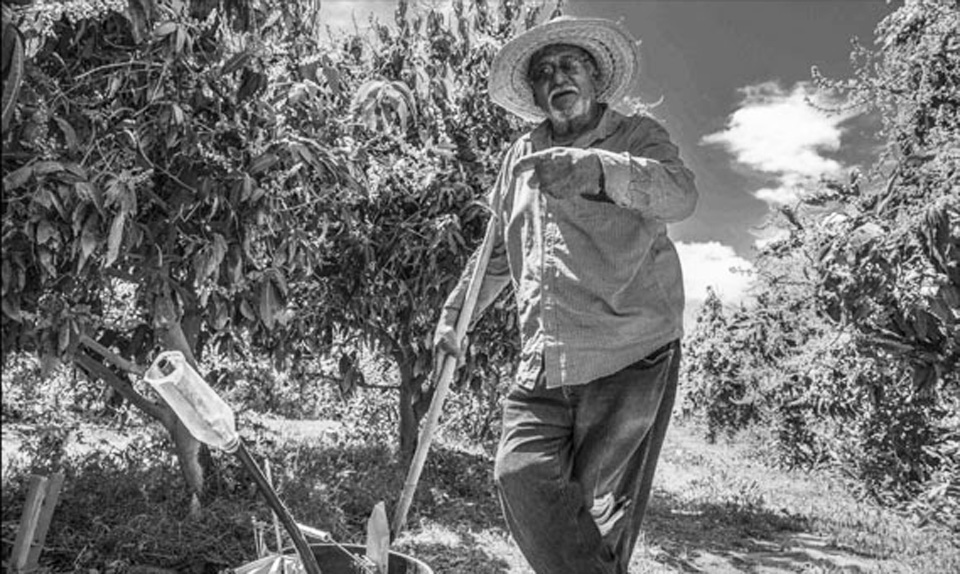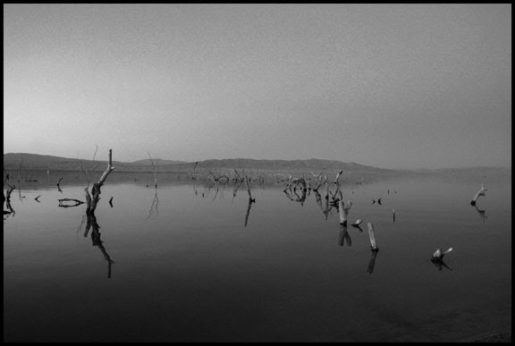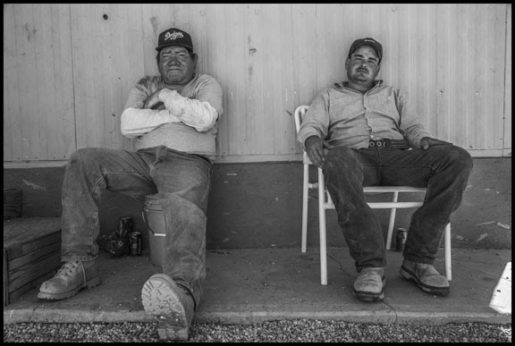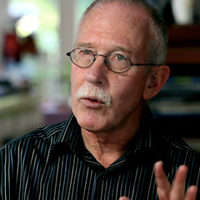
Forty-one years ago I was a young organizer for the United Farm Workers in the Coachella Valley, helping agricultural laborers win union elections and negotiate contracts. Suspicion of growers was a survival attitude. I was beaten by the son of one rancher in a vineyard, while trying to talk to people sitting in the vines on their lunch hour. When I met with workers in another field, my old Plymouth Valiant convertible was filled with fertilizer and its tires slashed.
By those standards, I could see that HMS Ranch Management, which manages day-to-day operations for ranch owners, was different. I’m sure Ole Fogh-Andersen, who ran the company, would have preferred that the laborers he employed voted against the union. But when they did vote for it in 1976, he sat down and negotiated. It took quite a while – he was no pushover. But Ruth Shy, a former nun who taught the virtues of patience and persistence, got most of our union committee’s demands into the agreement. I did the field job of keeping everyone on board.
HMS workers irrigate fields, drive tractors and otherwise care for ranches in this harsh, beautiful desert valley. In the summer’s 105-plus degree heat, the bright green leaves of grape vines shimmer below dark mountains, lunar in their sere, sharp edges. Coachella’s winter air is thick with the fragrance of flowering grapefruit and tangerine trees. In the groves of the valley’s unique crop – the date palms – dusty green and tan fronds create an arched ceiling over marching rows of bare trunks, rising 20 and 30 feet from the sand.
I’ve returned to the Coachella Valley many times in the last three decades, interviewing workers and photographing impoverished desert communities. Despite its beauty, the sustainability of large-scale farming, and of the communities that depend on it, is more clearly at risk here than anywhere I know. Published accounts of the valley’s huge environmental problems offer some insight. But my interest is in the world as it’s seen by the people working in it. Their biggest unanswered question is: sustainable for whom?
This spring I was driving up a rural road in Oasis, not far from the Salton Sea, when I met Rafael Navarro, busy trapping moles on an organic mango ranch. I wasn’t surprised that he worked for HMS – many maintenance workers on ranches are HMS employees. But then he told me he’d been hired in 1976. He was there when we negotiated that first agreement.
“That was the year people joined Cesar Chavez’s union,” he recalled. “From then until today we’ve been working under the union contract. It is very rare that someone can work in the fields, and keep working for one company for 40 years. Here we have been protected. It has a lot to do with the contract because it is not that easy to fire someone, unless you are drinking or you get in a fight. But if you don’t have those problems you work here very comfortably.”
The contract provides a medical plan, still a rarity for farmworkers. Pushed by the union, Cal-OSHA now enforces standards that provide shade from the fierce sun and heat, drinking water and some control over pesticides.
The mango ranch, however, is organic, so non-organic pesticides, herbicides and other chemicals can’t be used. That means at work Navarro doesn’t run the risk of chemical exposure, one of the greatest occupational health dangers for farmworkers. It also provides him work.
“My job is catching moles,” he told me, “because they eat the roots of the mango trees. It is an organic orchard, so they can’t use chemicals to kill the animals. We put traps with strong wires in their holes. When a moles arrives it gets trapped and you grab it.”
Navarro is 72, well beyond the age when other workers can retire and get Social Security, but he continues working although he has problems with one of his legs. Bending his stiff joints, he took a shovel and, in the weeds, dug out the entrance to a mole burrow to show me how he places the trap. The sun on the brim of his sombrero cast dark shadows across his face, highlighting his big bigote (mustache).
“They gave me the chance to do this job,” he explained, “but before, I worked fumigating the date palms on other ranches with sulfur, or spraying with different medicines. Then they decided some chemicals were too dangerous and took that work away.”
The Coachella Valley produces about $500 million in farm produce every year, and dates, grapes, citrus and tree fruit account for about half. Organic agriculture produces a growing part of it. According to Linden Anderson, who manages HMS’s field operations, mango growing is only a decade old. About 10 percent of mangoes and the much larger citrus crop are grown organically.
“It takes more work, its costs are higher and it’s less efficient, but what drives it is return on investment,” he explained to me in a phone interview. “Some growers like it for itself, but there is a growing market for organic produce, and while the premium isn’t as big as it used to be, there’s still a differential.”
The growth of organic agriculture, and the elimination of the use of some pesticides, has another impact on the valley’s ecology and on the health of its communities. The runoff from irrigation in both the Coachella Valley, and the Imperial Valley to the south, flows into the Salton Sea, carrying with it whatever chemicals growers are using. Irrigation also dissolves naturally-occurring salts from the desert soil, increasing the salinity of the water table. Tile lines placed five to six feet below the surface to drain excess water can carry those leached-out salts, contributing them to the runoff as well.
In past decades, Coachella Valley growers would irrigate by simply flooding the rows between vines, trees or plants with water, and then collecting the runoff. Today, Anderson says, most use drip irrigation, which uses less water and targets it more closely to the plants. Reduced water use creates less runoff as well.
Nevertheless, the Coachella and Imperial valleys face an environmental crisis created over decades. Both valleys lie in an ancient geologic depression that reaches a depth of 278 feet below sea level. In 1905, as Imperial Valley growers were building a system to bring nearby Colorado River water to irrigate their ranches, the levees built to contain the diversion failed. For two years the river poured into the depression, creating the Salton Sea, whose surface rose to over 80 feet above the desert floor.
Both valleys are dependent on Colorado River water. Without it agriculture here would hardly exist. Until 1949 Coachella ranches depleted the aquifer during dry years, and their wells would run out. Then the Coachella Canal began bringing 300,000 acre-feet of water from the Colorado to the valley each year. The All-American Canal, built even earlier, drained the Colorado into Imperial Valley fields. After the 1960s, the State Water Project also gave Coachella farmers an even bigger allotment of water brought down from the north.

Evaporation would eventually have dried out the sea, but in 1928 Congress designated land below -220 feet as a repository for agricultural runoff. Until recently, the lake’s surface has been about -227 feet, giving it an area of 378 square miles – the largest lake in California. The Salton Sea became an important stopping point for birds migrating on the Pacific Flyway, and was stocked with fish species including corvina, sargo and bairdella. Tilapia introduced to control algae in irrigation canals also wound up in the lake.
Over the years the Salton Sea’s salinity increased, however, from 3,500 parts per million to 52,000 ppm – about 50 percent saltier than the ocean. Fish, except the tilapia, died off. Dissolved selenium salts now pose the same danger seen in the Kesterson Reservoir in the San Joaquin Valley, where birds ingesting selenium became sick and died, and laid eggs with shells so fragile they collapsed.
Even more seriously, starting next January, water flowing into the Salton Sea in the Imperial Valley will be diverted to San Diego. In 2003 the Imperial Irrigation District agreed to transfer 200,000 acre-feet per year, if California took responsibility for the lake. In one year alone, according to a 2005 assessment made by Victor Ponce of San Diego State University, the diversion could reduce the lake area by 30 percent. That would expose square miles of dried lakebed. Wind-blown sediment could easily reach the streets and golf courses of Palm Springs, travel south to Mexicali, a city of over a million in Mexico, and even blow into the cities of Riverside and San Bernardino to the north.
Whatever is in the sediment will wind up in people’s lungs.
That’s already the problem of the farmworker towns of the eastern Coachella Valley – Thermal, Oasis, Mecca and North Shore – where dust from the fields and the evaporating sea gives everything a gritty coating when the wind blows. Dust creeps through the doors of the beaten up mobile homes in the tiny trailer parks wedged into the corners of fields and date groves.
In one such settlement Elisa Guevara leads protests over rent hikes or high rates for undrinkable water. As we sat talking in her living room, her trailer vibrated from the wind. The swamp cooler on the roof cut the temperature inside by only a few degrees from the sun’s furnace outside.
“We’re a forgotten community. We’re invisible,” she declared angrily. “We’re called ‘ranchos polancos’ – trailers without city permits that don’t meet local codes. There’s hardly any housing for farmworkers, so park operators can rent or sell us these dilapidated trailers. There are more than 100 parks like this in the Coachella Valley. None have permits. Workers often go without electricity and a sewer system, or live with contaminated water. If you complain the owners threaten to call the county or the migra.”
Driving down towards the Salton Sea, I passed one of those trailer park “colonias” a few miles from Oasis. Near the dirt entrance road two men sat back against the battered silver skin of one mobile home. They were still in their work clothes – one older, stocky worker with a few days beard, and a thinner, younger man. Looking at their work belts and bags in the dust at their feet, I guessed they were “palmeros,” or date palm workers.
Alberto Castro, the younger man, had spent 15 years working in the palms, one of Coachella’s most dangerous jobs. Earlier I’d passed a roadside memorial next to a chain-link fence around a palm grove. Religious candles in tall glasses were surrounded by plastic flowers, a power line visible overhead. Last year two palmeros had been electrocuted on that spot.
“I still think about the two men who died in the palms,” Castro told me in a low voice. “I knew them. They lived nearby and worked 30 years in the palms. They made just a small mistake – it can happen to anyone. They were not watching closely enough, and when they pushed the button to raise the arm of the machine, they struck the power line overhead and died. It was a shock to the rest of us. The owner of the ranch should not have been planted trees with power lines above them. I would never have put a palm there. But that is how we work.”
Castro and his friend Carlos Chavez have had no union contract to provide them security over the decades, as Navarro has. But they have a special set of skills. Not many people are willing to climb 30-foot trees, so if they don’t get hurt, they’ll have work.

While we were talking, moving to keep in the shade, Chavez’s daughter Michelle came out of the trailer to join us. Her father’s eyes lit up. Michelle is doing what Castro hopes his kids will do also – studying hard in high school, hoping to get a scholarship. She went to work with her dad too, and came away determined to go to college. But she says she wants to stay in Coachella with her family, and find ways to keep them healthy and not so poor. I wondered if she would find the answers she was seeking.
Michelle may go away to school, but she’s not leaving this community, nor are her parents. Although they all come from Mexico no one is leaving the Coachella Valley. From time to time Navarro goes back to visit Salitre, his hometown in Michoacán. “I stay a month and then I come back,” he explained to me. “I have a house but it is falling down since no one lives there. All my family was born when I was working here, and my children are not thinking about going to live in Michoacán. They go with me to visit, but then they come back right away. They like it for a while but not to live there.”
These farmworker families are in Coachella to stay. Rosalinda Guillen, who was born into a farm-worker family and today organizes farm-worker co-ops and unions, charges that mainstream stereotypes paint field laborers as transient and unskilled. “We’re treated as disposable,” she charges, “but we’re human beings and we’re part of the community.”
Sustainability is the mantra for many groups seeking a future in which communities near the Salton Sea can survive. Guillen sees sustainability from a farmworker’s perspective. To her, and to the workers of this valley, sustainability means that organic agriculture could help solve the problems of water runoff. That, in turn, could lead to jobs for communities living in broken down trailers, depending on dangerous work in the palm and mango trees. And if there were a union, it might become work they’d want their children to do.
Guillen especially sees the irony in workers producing organic fruits and vegetables, which their low wages don’t allow them to buy. “Like these organic carrots,” she fumes, pointing to a bunch on a market shelf. “A farmworker can’t come and pay the price for these fresh carrots, and they grow them! It’s totally off balance. [The system] is unsafe, unsustainable, inhumane and unhealthy for everybody – for people, for animals, for the earth.”
As one looks out at the dried crust of the Salton Sea’s playa at the end of the day, covered with hundreds of tilapia skeletons, Guillen’s words seem terribly relevant.
This article was written/produced with the support of a journalism fellowship from New America Media, the Gerontological Society of America and the Silver Century Foundation.










